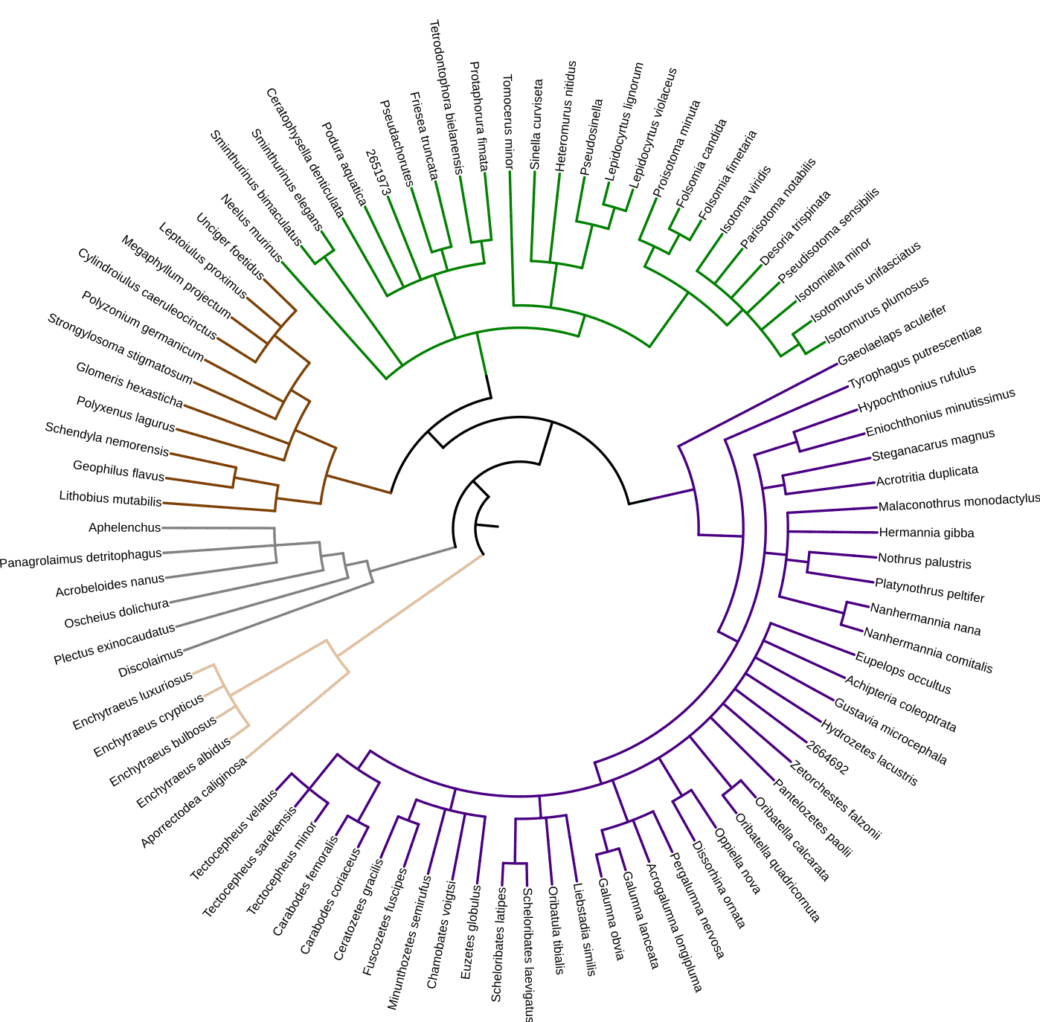Discovering Collembola biodiversity on grasslands with emerging genomic and metagenomic tools
Springtails (Collembola) are ubiquitous members of the soil fauna community and may occur in abundances of hundreds of thousands of individuals within a single square metre of soil. While they play an important role in many key soil processes, very little is known about their basic ecology and natural history, nor how Collembola communities are responding to global environmental change. This is because of the difficulties in identifying them with traditional morphological methods, which requires delicate handling of numerous minute specimens and discrimination by subtle microscopic characters (Fig. 1). In BE-Spring we aim to employ DNA-based approaches to help with this task and make future identification and study of Collembola more accessible to non-specialists.
We will build a comprehensive genome database (Springtail Genome Reference Database, SGRD) of the most abundant soil springtail species across grassland ecosystems in Germany. We will identify and genome-sequence the most abundant springtails from the 150 BE grassland plots. This data will be complemented with springtail genomes sequenced within the MetaInvert project (Fig. 2) and with information on species traits. Voucher specimens are deposited in the Soil Zoology Division of the Senckenberg Museum of Natural History (Görlitz, Germany). The SGRD we will be an important resource for molecular identification of Collembola, and it will aid both research on their community ecology and on their responses to environmental factors and human impact (Fig. 3).
In a series of statistical analyses using BE-Spring and wider exploratories data we will also examine:
- The drivers of Collembola species abundance
- The impact of environmental drivers on the functional trait distribution of Collembola communities
- How Collembola communities are related to other aspects of the grassland ecosystem, e.g. plant traits and fungal abundance
The BE-Spring results will be compared with those from RESOILIENCE , another exploratories project which examines grassland soil invertebrate communities.
Our final goal is to gain information on the community assembly processes, basic ecology and natural history of Collembola species and their role in grassland ecosystem functioning.













